This Gilded Age Resort Island Is Now a Peaceful Paradise
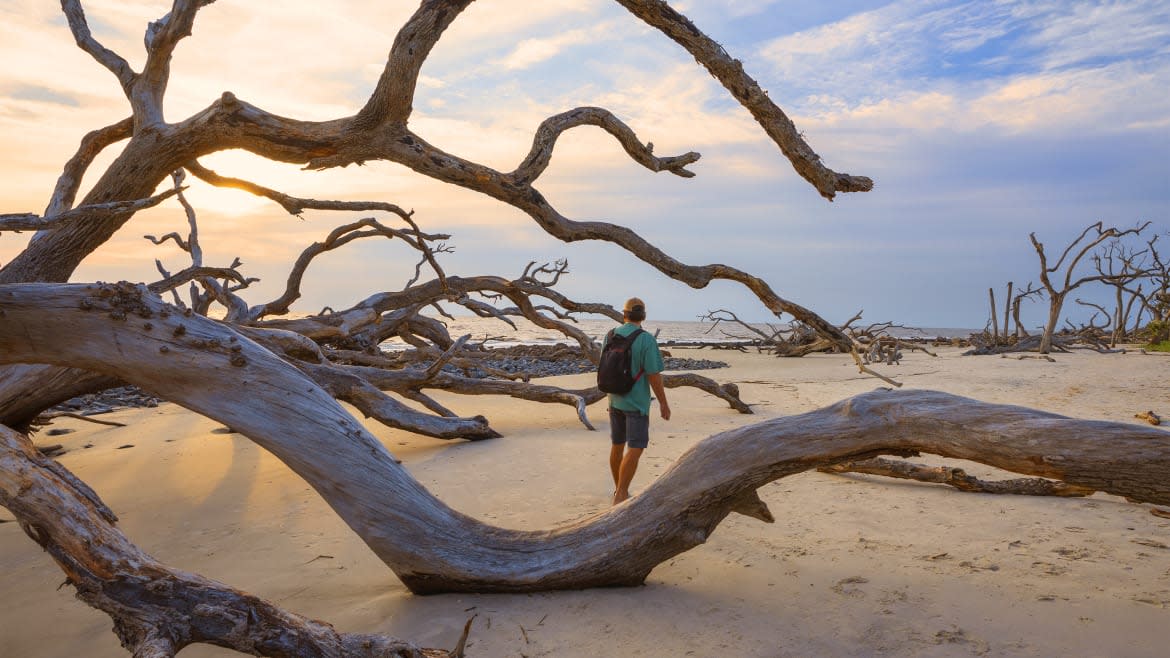
This is the latest installment of It’s Still a Big World, our series on underrated destinations.
I came to Jekyll Island, a verdant barrier island at the center of Georgia’s “Gold Coast,” unsure of what to expect. Having grown up in the South before moving to New York in my twenties, I knew I would eat well (and I did). I also knew I’d enjoy the South’s fabled hospitality, the effortless conviviality displayed by people despite the region’s uneasy history. I pictured iced tea and cool breezes pushing through the shade of ancient oaks hung thickly with Spanish moss. What I didn’t expect from Jekyll was the intensity of its people’s affection for the island itself and for the preservation of its historical and natural wonders.
Situated roughly halfway between Savannah and Jacksonville, Jekyll Island is separated from the mainland by a vast wetland prairie. “Terrapin Crossing” signs line the six-mile causeway to Jekyll, warning drivers to slow down as they approach the toll booth (it costs $10 per day or $100 per year for a parking pass). Proceeds go toward the conservation and preservation efforts of the Jekyll Island Authority, a governor-appointed organization tasked with keeping the island’s heritage intact.
Jekyll is home to just 1,000 full-time residents spread across 5,700 acres of lush oak and palmetto scrub. By comparison, more than 20,000 sea turtles hatched on the island’s beaches in 2022. Nature is the dominant feature of the island’s landscape. It feels far removed from the modern world. Days pass slowly and quietly, but that has always been the crux of its allure.
During the Gilded Age, Jekyll was one of the nation’s most exclusive winter resorts. Jekyll was less ostentatious than northern retreats like Newport, Saratoga, and Bar Harbor—social life here revolved around the Jekyll Club, founded in 1886 as a grand hotel and hunting lodge. Its roster included such notables as J. Pierpont Morgan, William Kissam Vanderbilt, and William Rockefeller, and it is said that when all its members were present, one-sixth of the planet’s GDP was under one roof.
The Jekyll Club shuttered in 1942, a victim of wartime complications, and the clubhouse now operates as a hotel. Life on Jekyll Island has become a bit less rarefied, but the qualities that attracted the titans of yesteryear continue to draw visitors to its peaceful shores.
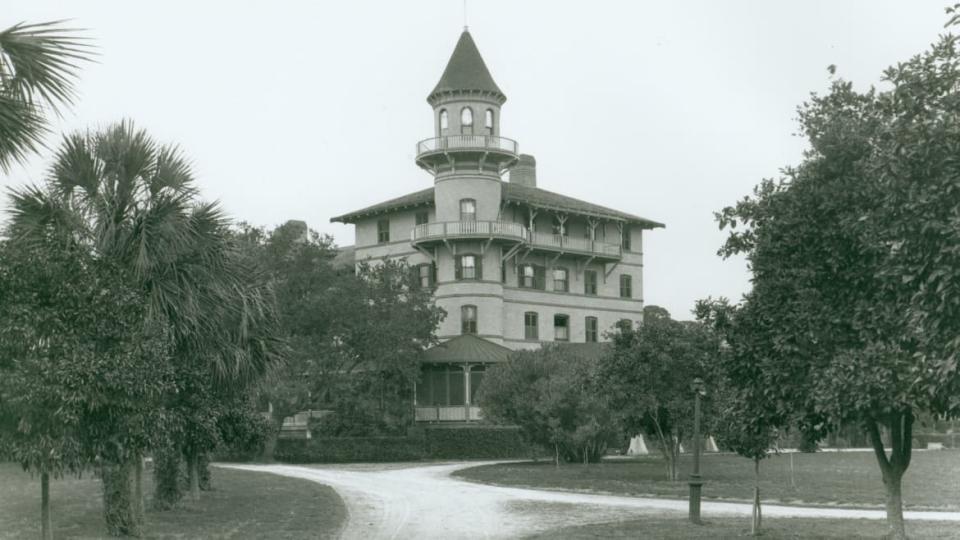
The original Jekyll Club.
Perhaps the most notable change for Jekyll came in 1954, when its six-mile causeway was completed, connecting it to the mainland for the first time. Prior to that, a trip to Jekyll Island required a boat ride. Most guests journeyed south by train to the port town of Brunswick, where a ferry would shuttle them across the marsh. Some wealthier guests arrived by private yacht, but even for them, getting to Jekyll took time and effort. For it, they were rewarded with a kind of edenic quietude unattainable in most other resort towns.
While visiting, I stayed at the former Jekyll Island Club, now operating as the Jekyll Island Club Resort. Its sprawling campus includes the clubhouse itself, beautifully restored and maintained. There are also a handful of adjacent “summer cottages,” the mansions built by the club’s wealthiest members, which are especially popular for wedding parties. There is even a splendid little interdenominational chapel which boasts a Tiffany glass window (currently being restored, the window is scheduled to be reinstalled to great fanfare in fall 2023).
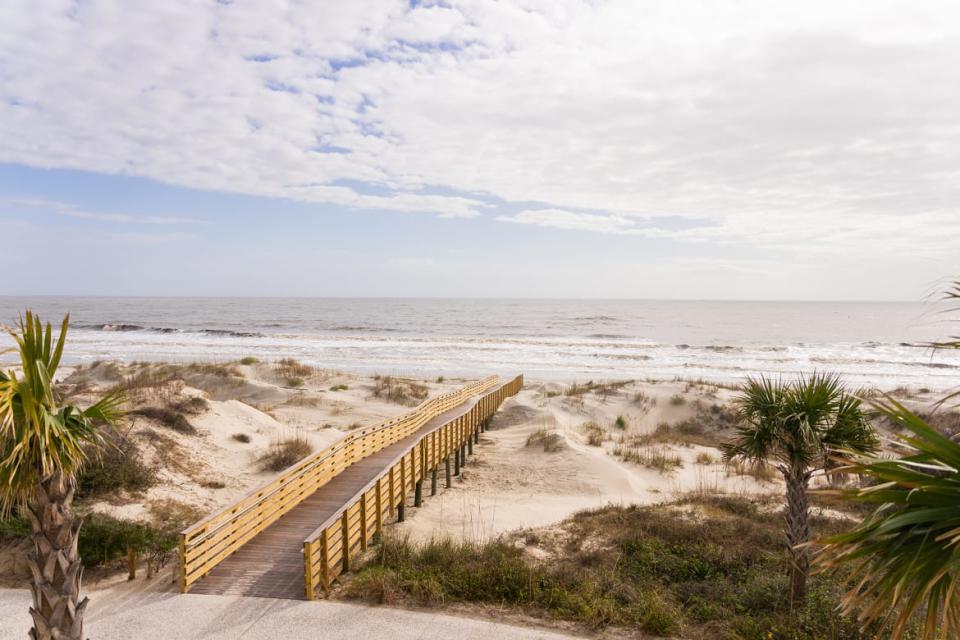
Jekyll Island beaches.
In all, the resort boasts 157 guestrooms, a pool, a gym, multiple bars and cafes, and a formal dining hall, all encircled by deep verandahs which invite guests to escape the heat of the day in plush comfort. Most interestingly, the former clubhouse’s many out-buildings have been adapted for use as shops and galleries: its stables are now the outstanding Mosaic, Jekyll Island Museum, and its wharf is now a restaurant with splendid sunset views. The whole complex is fully pedestrianized, a rare luxury in such a car-centric corner of the world.
My itinerary kept me busy, touring the island’s museum and other historic structures, trying local restaurants, and even going horseback riding on the beach. Jekyll is an easy place to love, peaceful and replete as it is with natural beauty. But I was most impressed by its people’s uniform and unblinking understanding of, and respect for, the island’s complicated history as well as its fragile ecosystem.
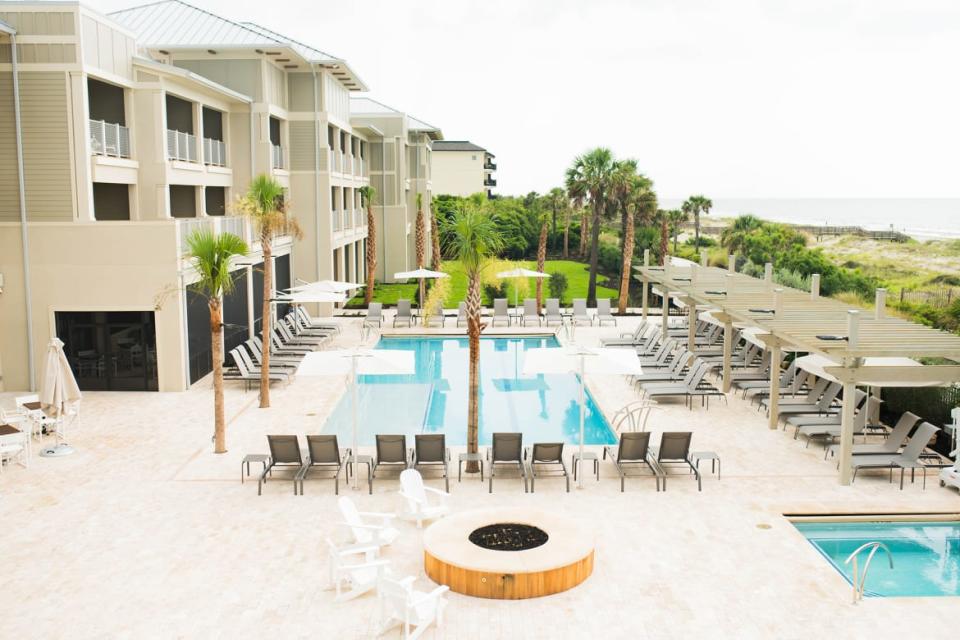
The Jekyll Club Island Resort.
The Georgia Sea Turtle Center, a short walk from the resort, operates a rehabilitation center for injured turtles. Its staff also oversee protection and monitoring of local nesting sites which line the island’s dunes. Those dunes exist largely thanks to the Jekyll Island Authority, which insists that fully 65 percent of the island is to remain wild in perpetuity.
That wilderness has allowed not just sea turtles, but alligators, horseshoe crabs, and a vast array of birds (including bald eagles) to thrive in harmony with the island’s residents and guests. Where development is permitted on Jekyll, it is done with as little impact on nature as possible. This is most apparent on the island’s oceanfront, where virtually no buildings have been built directly on the beach. This allows for the island’s aforementioned dunes, heaped with mature trees and scrub brush, to do their job of protecting against erosion. Thanks to them, Jekyll maintains some of the region’s widest, most stunningly intact beaches.
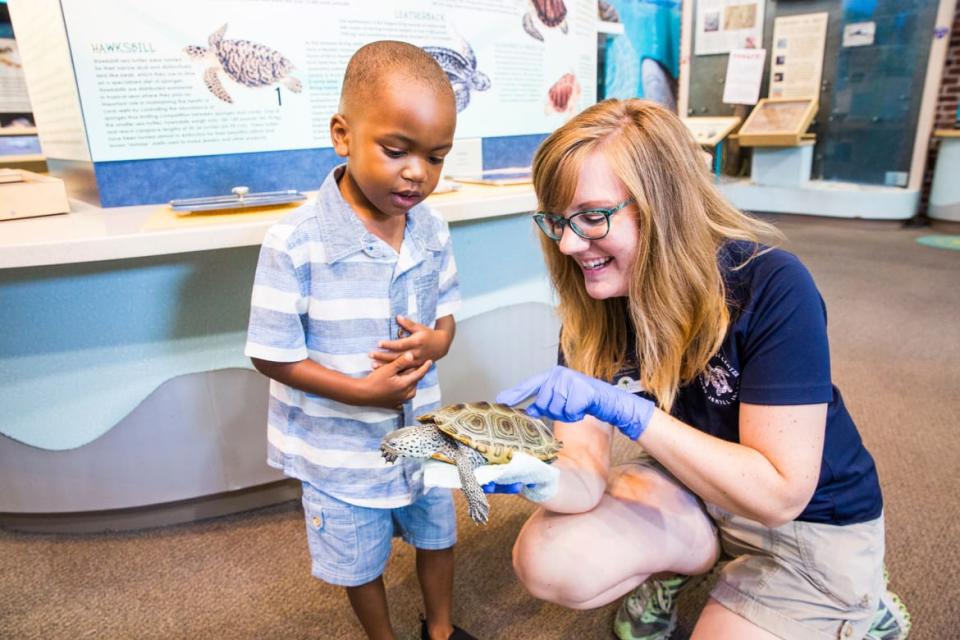
The Georgia Sea Turtle Center.
St. Andrews Beach, at the island’s southwestern tip, was the site of one of the more shameful events in Jekyll’s long history. In 1858, just 28 years prior to the Jekyll Island Club’s founding, a ship called The Wanderer laid anchor there, carrying 407 enslaved African people who’d survived the horrific 42-day journey across the ocean. Despite the nation’s abolition of the transatlantic slave trade in 1808, a vast network of smugglers continued to ply the Middle Passage, bringing many thousands more enslaved Africans into the United States over the next half-century.
The identities of the majority of the people brought over on The Wanderer are lost. Most were smuggled away from Jekyll to be sold in Savannah or other nearby cities. But their story lives on as part of “The Wanderer Memory Trail,” a designated UNESCO Slave Route Project Site, which interprets the ship’s story through the recollections of Umwalla, an African boy who survived the journey in 1858.
Through informative and interactive displays, visitors walk through the sandy forest, tracing Umwalla’s life from his memories of Africa, through the arduous journey aboard The Wanderer, to the golden shores of Jekyll. The path ends with a climb up a wooden tower which affords panoramic views of the beach where Umwalla and his fellow captives would have landed 165 years ago. The gravity of it casts a pall on an otherwise beautiful scene.
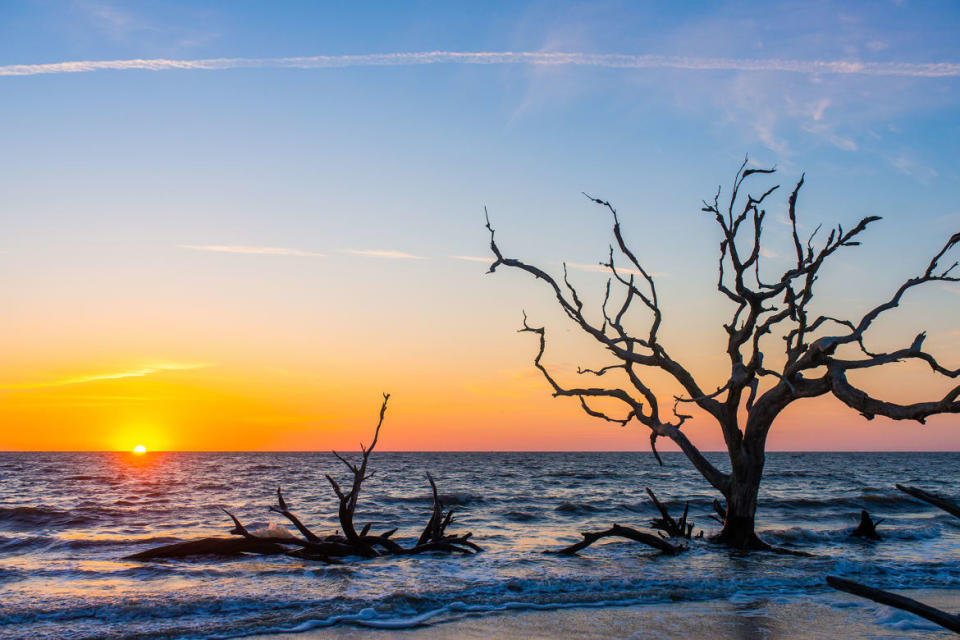
Jekyll Island driftwood beach.
Back at the resort, I was given a tour of Mosaic, Jekyll Island Museum, by its curator Andrea Marroquin. The name Mosaic speaks to the museum’s commitment to examining and contextualizing the many pieces which make up the island’s rich history. Recently renovated and expanded, the museum is impressive for the breadth of its collection and the fluidity with which it weaves together so many seemingly disparate stories.
Everything is represented, from the island’s more recent history as a state park, through its time as a Gilded Age retreat, to its years as a cotton plantation and, before that, its centuries as a Native American hunting ground. Perhaps most poignantly, the museum has reconstructed a section of the below-deck hold of The Wanderer, where the likes of Umwalla would have been held for more than a month in unfathomable conditions. The ship’s large iron cooking pot, displayed nearby, is believed to have been used to cook the first meal for its captives on St. Andrews Beach in 1858.
Such commitment to preservation and storytelling is widespread on Jekyll Island. Very little is done there without intention and an eye to the future. The island is special, and the people tasked with its care know that. Yes, it boasts stunning sunsets, a plush resort, terrific restaurants, and beautiful beaches. But it is also a place haunted by all the sins and triumphs of the last three centuries. With the commitment of its caretakers, and with guidance from the Jekyll Island Authority, its stories will continue to enrich visitors for the next three centuries.
Get the Daily Beast's biggest scoops and scandals delivered right to your inbox. Sign up now.
Stay informed and gain unlimited access to the Daily Beast's unmatched reporting. Subscribe now.

